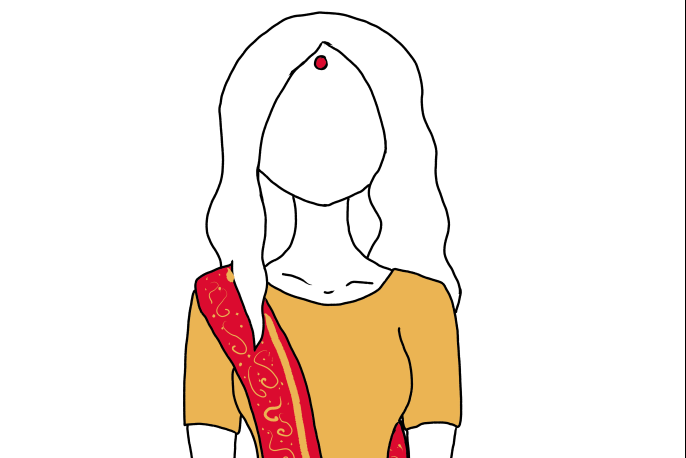Appropriation/Appreciation
Where do we draw the line between cultural appropriation and appreciation?
Photo: Crystal Baggett
If you scroll through 19-year-old Swedish model and social media influencer Emma Hallberg’s Instagram page, you will see pictures of her with plump lips, medium complexion, and curly hair, but in real life, she is a white woman with straight hair, thin lips, and a light complexion. This is the social media trend of blackfishing, and it is one of the many examples of cultural appropriation today.
Blackfishing is the trend of white Instagram influencers changing their features to look more like black women using makeup, cosmetic surgery, and clothing associated with black culture.
“I don’t think there’s a reason for people who want to change their skin tone, especially with makeup, because it just seems rude,” senior Alexis Turner who is black said. “If we look far enough in history, there are times where people have taken black paint and put it on their faces as a sign of hate and disrespect.”
Cultural appropriation is the unacknowledged or inappropriate adoption of the customs, practices, and ideas of one people or society by members of another and usually more dominant people or society, and many people, like Turner, see it as a sign of disrespect.
Katy Perry was accused of the appropriation of Japanese culture when she dressed up as a Geisha during her performance at the 2013 American Music Awards. Marc Jacobs’ SS17 fashion show was accused of cultural appropriation when white models wore dreadlocks, a hairstyle associated with black culture.
Some groups are more likely to encounter cultural appropriation than others. These examples reflect the taking of elements from a minority culture by a person from the majority culture.
“Sometimes it’s based on where they are and how other people treated them throughout history,” senior Surabhi Singh, who is of Indian heritage, said. “If they were marginalized in the United States, they’re more likely to think that it is cultural appropriation when people try to suddenly embrace their culture.”
A group’s perspective about cultural appropriation can be affected by their cultural background and history.
“For me specifically, my biggest encounter with cultural appropriation is when people use the Mexican fiesta hat and use it to hold salsa or guacamole dip,” sophomore Luis Lopez, who is of Guatemalan descent, said.
Some examples of cultural appropriation can be more controversial than others. This is especially true if it is clear that the person appropriating the culture deliberately knew that what they were doing would be offensive.
There has been a debate in recent years over whether wearing Halloween costumes of Native Americans is offensive. This debate has expanded to costumes of mentally ill patients, LGBTQ people, and historical figures from other cultures.
“I feel that if you’re young, like itty-bitty, it’s more accepted, Lopez said. “If you’re older and of the majority ethnicity, you have to be careful with how you portray it. I think it’s okay as long as you’re not crossing lines and being disrespectful towards the community that you’re dressed up as.”
Native American mascots have become a topic of controversy. The Change the Mascot campaign is a grassroots movement whose goal is to educate the public about the harmful effects of the word “redskins” and to urge the National Football League’s (NFL) Washington Redskins to change their name. In 2016, they issued a statement to the press in response to the Washington Redskins playing on Thanksgiving.
“At the very time our society is increasingly consumed by racial division,” the campaign wrote. ”It is unfortunate that the NFL continues to be a leader in promoting this kind of blatant bigotry.”
Other sports teams are making changes to their Native American mascots in response to the backlash. In January 2018, Major League Baseball’s Cleveland Indians announced that their logo, Chief Wahoo, would be removed from players’ uniforms and caps.
“I think intent is really the thing that differentiates the two,” junior Aiden Curran, who is white, said.“I think if you are meaning to belittle another group of people, I think that’s cultural appropriation. Whereas if you’re celebrating another culture, then that’s cultural appreciation.”
Cultural appreciation is also more common in today’s society with the proliferation of information that the internet has brought with it. However, one has to be careful to educate themselves and represent the culture they are portraying with respect.
“My general viewpoint on it is that if you want to wear henna, if you want to eat Indian food, please do,” Singh said. “I’ll teach you about my culture, but just don’t make generalizations about it.”












